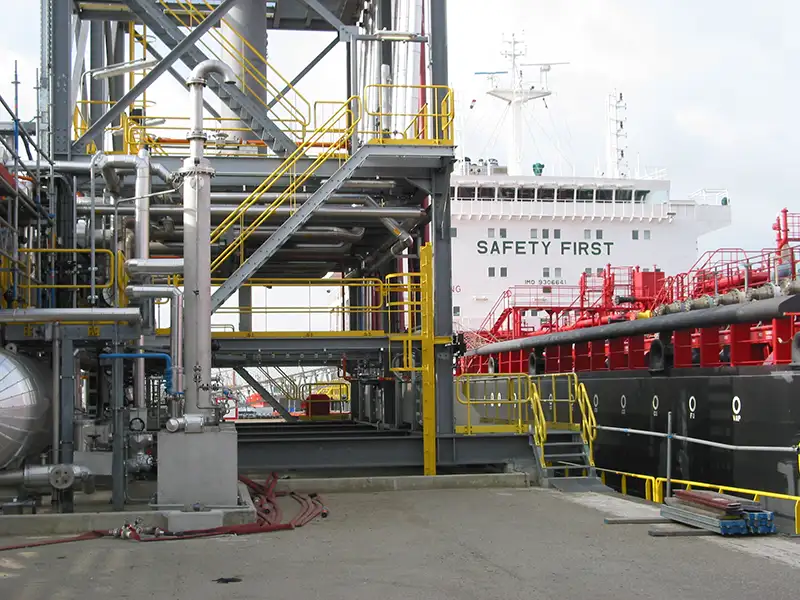Cleaning of vapor recovery
Harmful substances released during loading and unloading
 The loading and unloading of ships, trucks and railway wagons leads to the emission of gas. When there are harmful, toxic or (strong) odor-bearing gases or vapors, they may certainly not be emitted freely. The owner of the installation must ensure that the discharged gases or vapors are stripped of the harmful components.
The loading and unloading of ships, trucks and railway wagons leads to the emission of gas. When there are harmful, toxic or (strong) odor-bearing gases or vapors, they may certainly not be emitted freely. The owner of the installation must ensure that the discharged gases or vapors are stripped of the harmful components.
Tank scrubbers and vapor recovery systems
Due to its versatility and wide range of applications, the scrubber is one of the most commonly used techniques because the scrubber can be placed directly at the emission source due to its explosion safety. This means that no vent pipes are required, making the system compact and therefore relatively low cost. In addition, a vertical tank scrubber has a small footprint, so that the footprint on the jetty or the quay remains limited.
The construction
Due to its construction, a gas scrubber is perfectly applicable for both continuous gas flows even with strongly fluctuating flow rates and intermittent flows, which are often inherent in badge processes. Due to the solid, simple construction, maintenance is kept to a minimum and reliability is guaranteed.
For applications such as vent gas scrubber for storage tanks in tank farms, this type of scrubber is also excellent to apply. Because of the compact design, it is even possible to make the scrubber mobile, so that one easy to remove scrubber can be sufficient for the entire tank farm. It is undesirable and in some cases even forbidden to connect several tanks to a scrubber.
Each storage tank performed with own absorber.
There are several reasons for this:
- Different gases that should not come into contact with each other.
- The storage tank is remote, which would make (long) pipelines too expensive.
- Cost of a (larger) usual scrubber.
- Energy consumption (no fan and pump required).
Scrubber according to customer wishes
Ravebo offers tailor-made solutions for almost every conceivable application to prevent emissions, together with the customer we look at all possibilities for the right outcome:
- Of the storage tank as a result of emission or in the event of an increase in pressure and/or temperature.
- As a result of pumping liquids (displacement of gas).
- At loading stations (also to improve working conditions).
